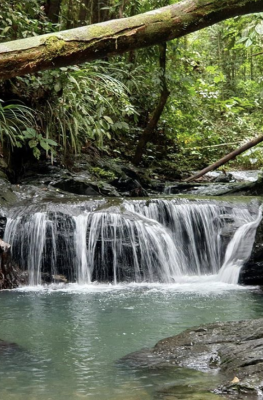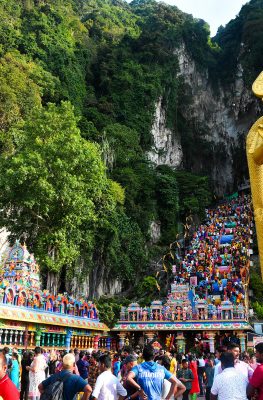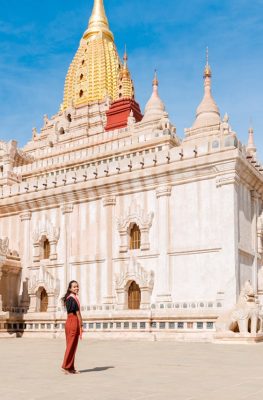Published on November 7, 2013
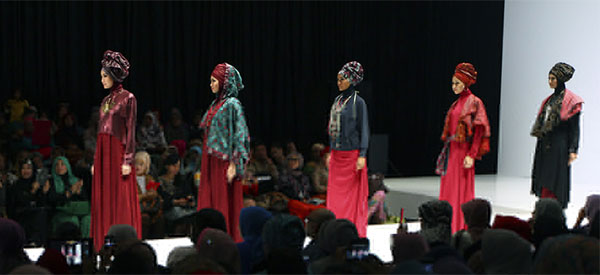
Southeast Asia’s fashion scene presents a varied mix. Singapore offers the hottest fashions, while Indonesia is on the cutting edge of Islamic designs. Malaysian and Thai fashion are quickly expanding into international wardrobes, while Cambodia, Philippines, and Viet Nam’s fledgling fashion scenes are also gaining attention around the globe. Brunei designers are just coming into the limelight, while Lao’s fashion leans towards traditional wear, its young designers are beginning to make their mark. Meanwhile, Myanmar fashion mostly focuses on traditional styles. Several ASEAN countries hold fashion weeks and events in their tourism calendars, and local labels are certainly worth a look.
Brunei Darussalam: Most Bruneians wear traditional and cultural clothing, however one, Maricel, went abroad to get a degree in fashion design. Upon her return, she surveyed the fashion scene in Brunei, and said, “To be completely honest, there isn’t much regarding fashion in Brunei…but hopefully more genuine interest and awareness in contemporary fashion will steadily increase over the next few years. Hopefully through what I have learned, I will be able to contribute to this, along with other passionate individuals.” Source: Projek Brunei.
Cambodia: Though most Cambodians continue wearing traditional garb, Phnom Penh designers are establishing a fast-growing fashion scene in the capital. Launched in June 2013, the Phnom Penh Designers Week featured nine local designers presenting their latest lines, and some retain classic motifs, inspired by traditional stories and mythology, in their modern attire. Cambodia currently has established brands like Don Protasio, Waterlily, and KeoK’jay, and emerging labels like A.N.D, and SCT, with Cambodia-based fashion initiatives nurturing more. The Samaki Sewing Network, a Phnom Penh-based socially responsible garment manufacturer recently merged Anne Noelle Fashion workroom and the KeoK’jay design workshop to bring up new talent. Industry collaboration appears to be driving the fashion scene, backed by the first graduates from two universities, which now offer fashion programmes. Source: Cambodia Asia Life.
Indonesia: Indonesian’ designers are taking traditional Islamic clothing to a new level, as seen at Jarkarta’s Islamic Fashion Fair. The runways found models covered in loose fabrics with various textures and colours, as opposed to the conservative black abayas worn in the Middle East. Colours and patterns ranged from light pastels to earth tones brightened by lime green turbans and printed jackets, as designers push the envelope to create more attractive clothing that is suitable for the religion. Currently women in the world’s most populous Islamic country wear bright headscarves with brand-name jeans and long-sleeved shirts. As one designer noted, “Indonesia hopes to become the Paris of Muslim fashion by 2020 with its bold designs and creative modern head wraps.” Source (and pic at top of story): Thatish.
Lao PDR: Most Lao women wear traditional silk and cotton sins with intricate designs embroidered for the bottom hem woven in small villages throughout the country by girls and ladies using looms and age-old thread making and dyeing techniques. Women in the capital’s offices all wear sins, with some matching the company’s colours, and female military uniforms are the olive green of all soldiers. However, when the weekend comes, the younger crowd dresses in Western wear for a night on the town. Several NGOs and entrepreneurs have moved in to assist weavers in improving the quality of their products as well as encouraging them to create new designs. Millennial designers and even secondary school students are now coming up with variations of the sin to bring them up to date while maintaining the original look. Source: Got Laos.
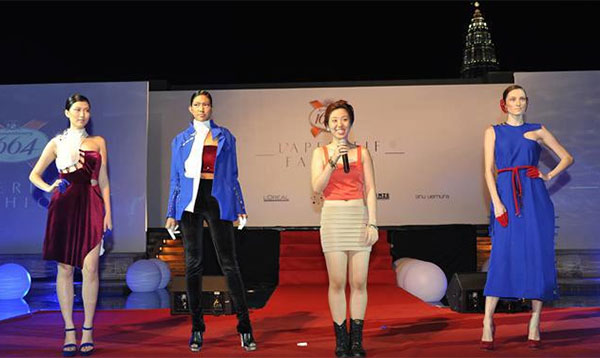
Malaysia: Malaysia’s population is mostly Islamic, and successful designers tend to stay within the religious boundaries, while mixing classic fabrication with modern cuts and styles. Still, the country has a local fashion scene that is growing and quite trendy. The 2012-2013 designs for women stress purple with sequins and organic fabrics, though white is still popular during the summer. The sequin craze applies to dresses and tops, with bronze, gold, or black as the colours of choice. Eco-friendly outfits came into vogue in 2012, and the trend is continuing to grow. In recent years, the annual Malaysian Fashion Week presents young Malaysian designers launching their brands, and most of the designs appear fresh and have a European flair. Islamic fashion has also taken a spot on the runways during the Muslim segment in Fashion Week. Sources: The Malaysian Times, (and pic) Fashion around the World.
Myanmar: Myanmar women continue to wear traditional skirts and tops, which vary among regions and ethnicities, though most produce extremely elegant creations for special events and holidays. The Silver Palaung women of Shan State wear red tube skirts (glahng) with multi-coloured stripes, and short, deep blue jackets over shiny blouses (sallows). Pa’O women, in the country’s northeast, wear black and intensely dark indigo loose-fitting cloth blouses with a dark jacket. In northernmost Myanmar, Kachin women don vermillion-toned woollen skirts, with coloured trellises and crosses, wrapped around the waist, and matching ankle-length stockings. They also put on tall caps with motifs, and black velvet jackets adorned with silver trinkets. Source: MyanmarBurma.com.
Philippines: Some Filipino designers are attempting to develop new designs using indigenous materials, but Filipino trend-seekers still travel to Hong Kong, Singapore and the USA to shop. However, more and more department stores and boutiques in malls are carrying a greater assortment of international brands. Unfortunately, price remains an issue, but bargains can be found. Sources: The Philippine Star, The Business of Fashion.
Singapore: Singapore consistently ranks among the top 10 most fashionable cities in surveys, and annually holds various fashion events. A key fashion highlight in the city is the Asia Fashion Exchange, which consist of a series of both trade and fashion events such as Star Creation, Blueprint, Asia Fashion Summit, Star Creation and AUDI Fashion Festival. Blueprint is an international trade show while Asia Fashion Summit is a business networking conference. AUDI Fashion Festival on the other hand, showcases top international designers and labels, while Star Creation aims to uncover Asian talents and provide them with the opportunity to launch their dreams in the creative fashion world. Local talents also shine at Parco next NEXT, which nurtures local design talent in an 18-month mentorship programme that aims to develop student labels into retail brands. To date,several designers are already exporting their labels. Among the most successful participants is Yun Ting Lee, the lead designer of Episene Parco next NEXT. Other local labels are also gaining acceptance by locals and foreigners alike as Singapore designs continue to grace the runways. Source: Asia Fashion Exchange and Singapore.sg.
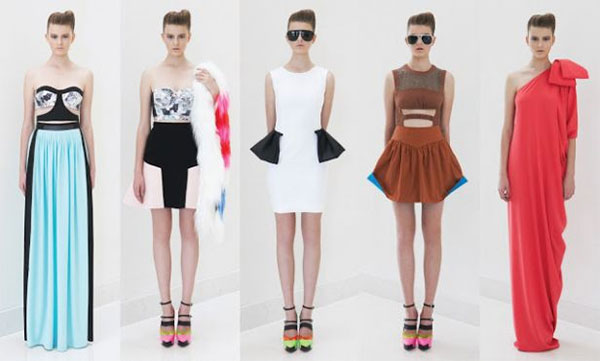
Thailand: Thai labels are increasingly grabbing the attention of domestic and international consumers for their design’s adaptation of cultural forms and geometry, and designers seem to grasp advanced draping and construction techniques without losing a sense of harmony and beauty around the human form. The annual Bangkok International Fashion Week finds plenty of Thai brands on the runway, the most popular of which are Asava (pictured), Kloset, Sanshai, and Theatres. Fashion experts see appeal in Thai designers’ use of rich printed or embellished fabrics and complex draping, and have noted the rising use of head wraps. Still, soft colours in a range of fabric weights remain popular, and Thais tend to pay great attention to clarity and detail. Source (and pic): RockPaperInk.
Viet Nam: Several Vietnamese fashion designers are presenting their labels in Asian and international markets, with brands like Valenciani, Mai Lam, Dang Thi Minh Hanh, Nguyen Quoc Binh, and Thuy Diep hitting the shelves. And though many might expect Ho Chi Minh City, Viet Nam’s largest population centre, to be the nation’s fashion hub, take a look around Hoi An and its high-end stores like AoBaBa, Yaly Couture, and A Dong Silk for the latest designs. You can still find distinct ethnic textiles in the country’s north-western Sapa region, but the growing middle class heads to the big-city malls to purchase South Korean and Japanese trendy designs, which have influenced up-market Vietnamese designers. Source: Shirk Magazine.



